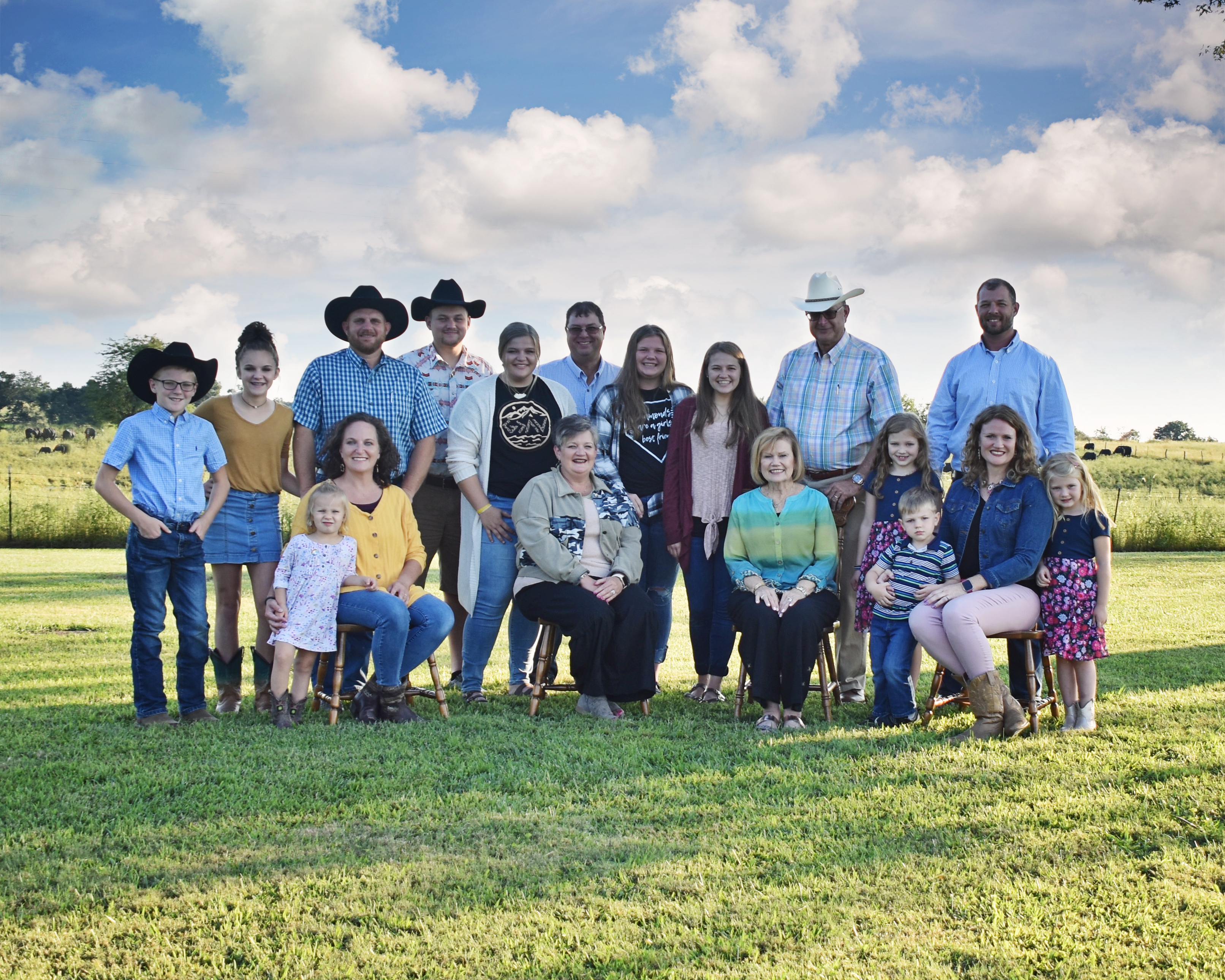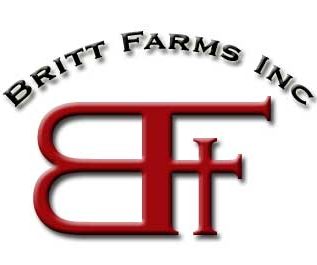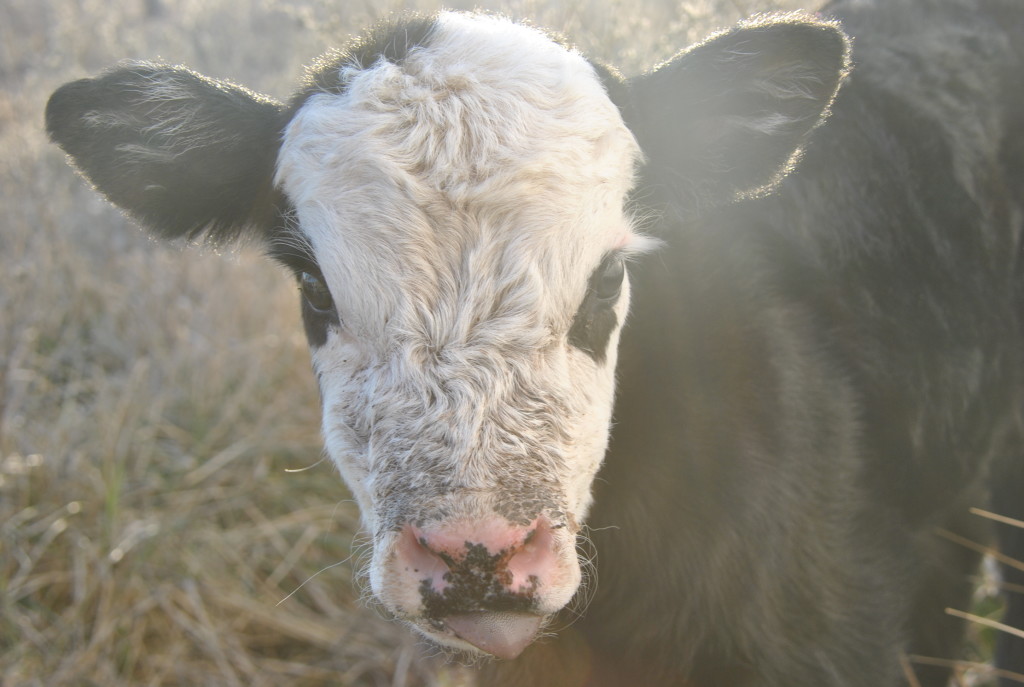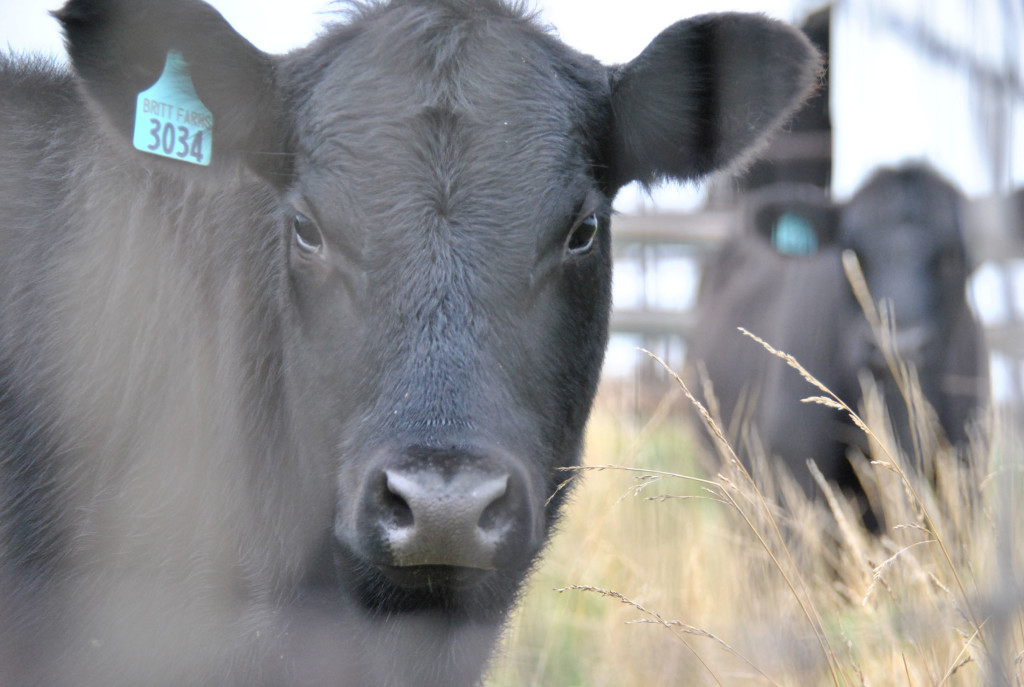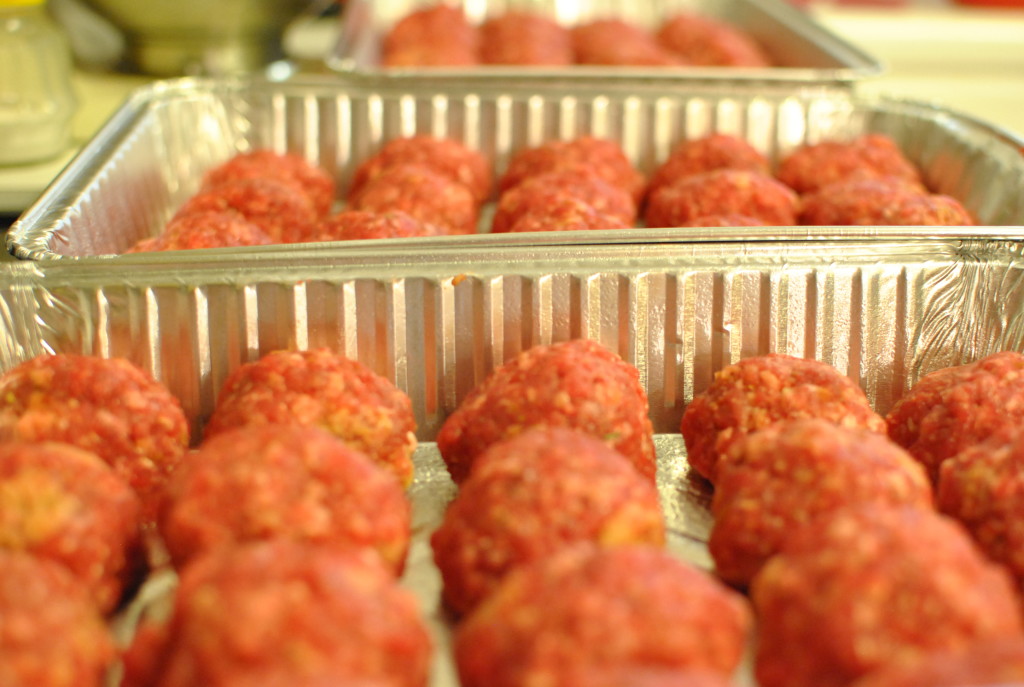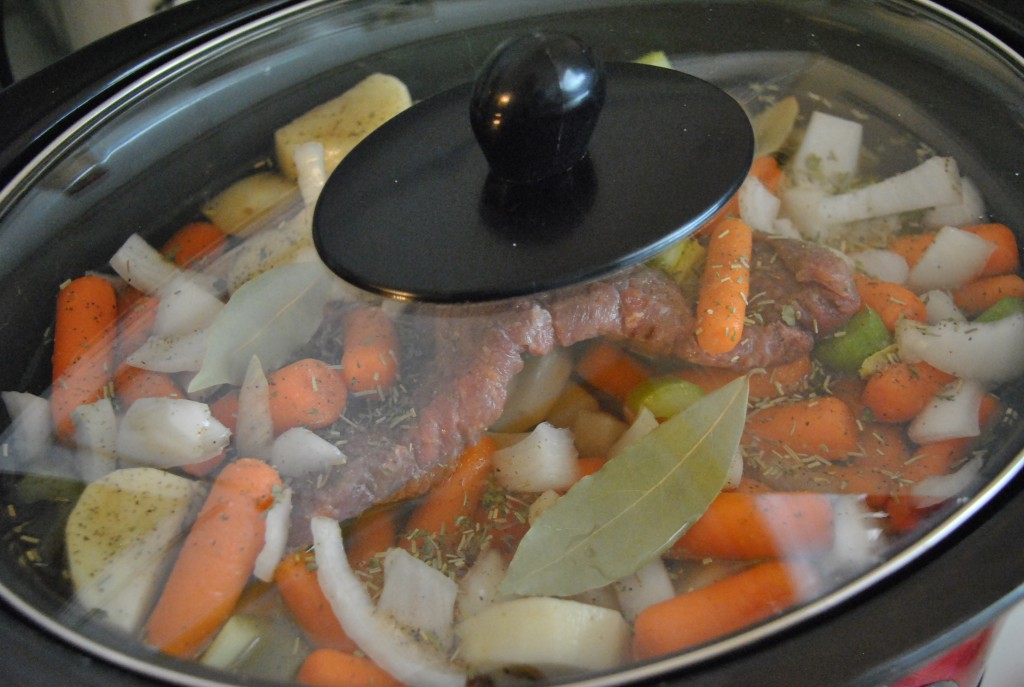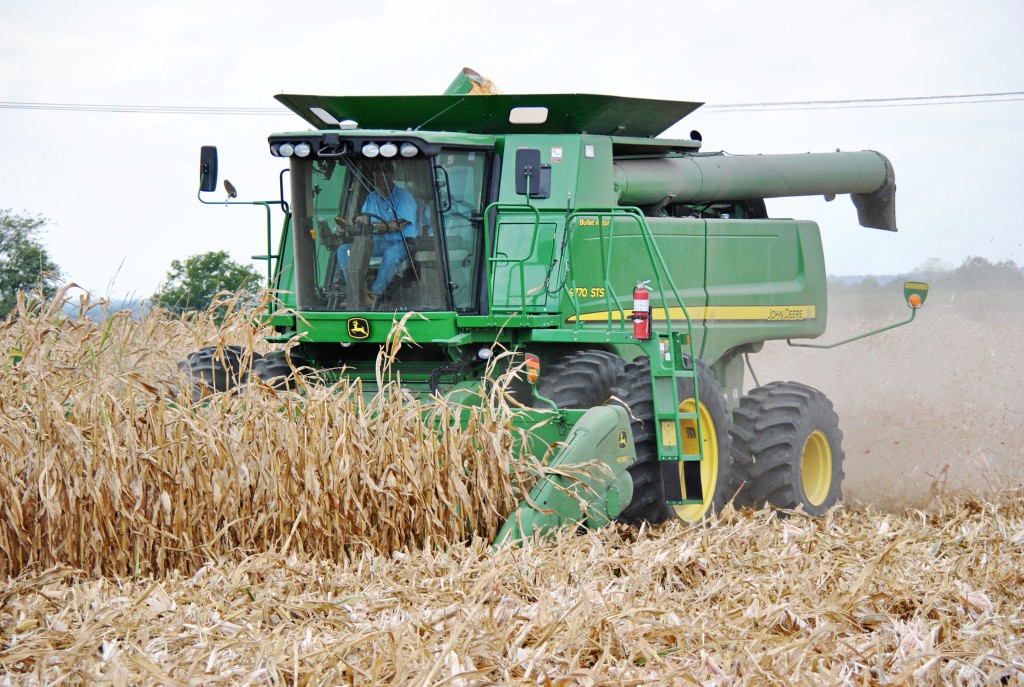Your source for Healthy and Affordable Beef
Britt Farms earns recognition for conservation stewardship
Missouri Farmers Care is in Randolph County, Missouri.
October 7, 2021 · Meet our first finalist of the 2021 Missouri Leopold Conservation Award — Britt Farms, Inc. of Clifton Hill in Randolph County. Ryan Britt and his family utilize cover crops and no-till practices to prevent erosion and improve soil health. In addition, the family uses a covered feeding facility in the winter, and rotationally grazes beef cattle in the summer to preserve water and grass resources. Conservation is at the forefront of their family’s farming methods as they strive to leave the land better than when they found it. To learn more CLICK HERE.

“Our family is grateful for this honor. We appreciate the encouragement and education MO Farmers Care provides for farmers as we all strive to protect and care for God’s beautiful creation.”
– Kara Edwards, Britt Farms INC.
They have arrived!!! Beautiful, friendly and RED!
This is a day on the farm I will never forget and I hope my 3 year old doesn’t either.
First, let me share with you some history.
As I was growing up on the farm, our cattle operation consisted of a wide variety of cows my grandfather would find at the sale barn. We had tall ones, old ones, black, white, grey, red and sometimes down right mean ones. And some were a little of everything. Grandpa had a great mind for business and he focused on how to make a quick dollar here and there to sustain the crop production side of farming. It was admirable and it was so much fun to sit and watch him work the sale barn while bidding.
My father on the other hand was and still is equally wise for business but had a different, much longer term perspective. Dad saw the big picture and instead of a quick dollar he envisioned an operation that would fit the evolving market and sustain the beef production side of farming. This meant investing in good genetics and creating a herd that was pure, black Angus. It has been incredible to see this dream become a reality for both Dad and my brother.
Our hodge-podge pasture groups have transformed into healthy, black beauties who both calve well and have a much more efficient weight of gain. Dad and Ryan have built great relationships with breeders and have a good eye for the market demands. It has changed the entire dynamic of our beef cattle operation. We now do rotational grazing and are expanding into direct-sales with our freezer beef. The genetics and feed have come together to fashion tender, flavorful beef that has given us returning customers year after year. Not every year is a stellar market but with the crop production side of our farm we are able to ride it out and stay in the game.
Now, how does that lead to my big announcement today? Well, one more fun little story. As I shared, my dad prefers black cattle. They tend to bring a higher price in the beef industry and he simply likes the velvety look of them. I, on the other hand, prefer red cattle. Specifically Herefords (red with white faces) but any red cow will do. When I was younger and dad began customizing our herds, he reminded me that he will never purchase a red cow. He didn’t want me to get my hopes up. I appreciated his honesty even though I would tease him about it year after year as the time drew near for me to begin my SAE (Supervised Agricultural Experience) for FFA. I specifically had requested Hereford calves. He again reminded me that we do not raise red cattle on our farm.
When I thought all hope was lost for my red herd, I saw my beloved Grandpa drive in pulling a goose neck trailer. He had come straight from the sale barn. I peeked in the holes of the trailer and couldn’t believe my eyes. He had purchased, just for me, not one but five Hereford heifers. I was beyond excited. They were the most beautiful creatures I had ever seen. Their white heads curled just right and they were so sweet and friendly. I named them after my favorite childhood book series that Dad used to read to me at bedtime, “Little House on the Prairie”. Laura, Mary, Cary, Grace and Nellie (she truly was a little ornery) were here to stay on our farm.
Every time I think back to that day and those heifers I wish I could try one more time to convey to my late grandfather how much it meant to me. The funny thing is, I hand fed those babies into large cows and we bred them to one of our black Angus bulls. My dad again didn’t want me to get my hopes up so cautioned me that their calves would be black and white. The black is almost always the dominant gene. Guess what I did? I prayed. Yep, I prayed about cows. I asked God to please bless me with at least one red and white calf from my sweet heifers. He answered this farm girl’s prayer in a big way. Four out of the five heifers calved and more than one was red and white! I love how God cares about the small stuff and gave us all something to chuckle about for years to come.
Now, 15+ years later, my dad and brother informed me that we were purchasing a group of red Angus cows and one of them even looked like a Hereford! Once again, I couldn’t believe it. They were almost sheepish in telling me. It was great. They do have very logical reasons in making this purchase. It wasn’t really about my hair preference. You see, red cattle do not get as hot as black cattle so they will not be spending every warm day huddled under the trees. What’s the big deal in that you may ask? A few main issues arise when they spend a majority of their day under trees. It makes it harder to check them and their calves, fly control is nearly impossible and it doesn’t spread out the manure over the pasture to naturally fertilize the grass. We rely heavily on healthy, well maintained pastures since a majority of our cattles’ lives are spent on grass. So the red really does have an efficiency value, not just a photogenic aspect.
I’ve waited weeks for these girls to be delivered with their new calves. As I was rushing around feeding breakfast to my daughters and getting us ready for a trip to town my husband walked in the door, knowing I would be very excited, and informed me that my red herd was finally on the way!!! I quickly dressed the girls, grabbed my camera, thanked God and ran out the door just in time to see the trucks drive in pulling goose-necks full of the most beautiful red headed creatures you have ever seen. Okay, so maybe the most beautiful red headed cows and calves you have ever seen.
They have been well fed, worked with and loved by the Swallow family. We will do our best to carry on that same affection. I keep looking out the window grinning and wishing my grandpa could see them. Enjoy these first pics of their new home at Britt Farms.

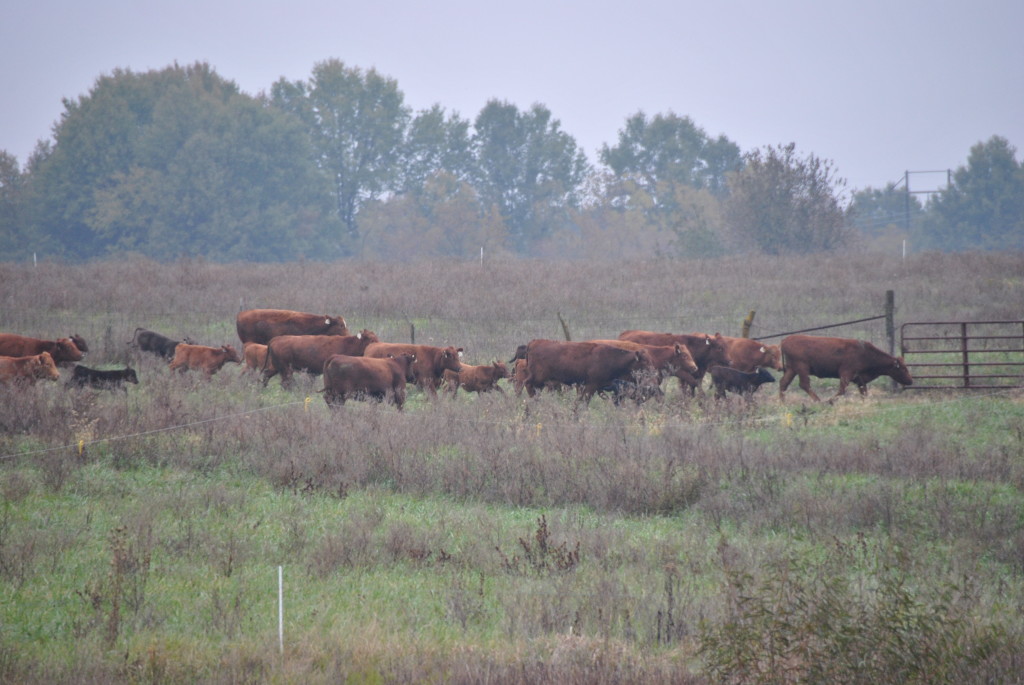
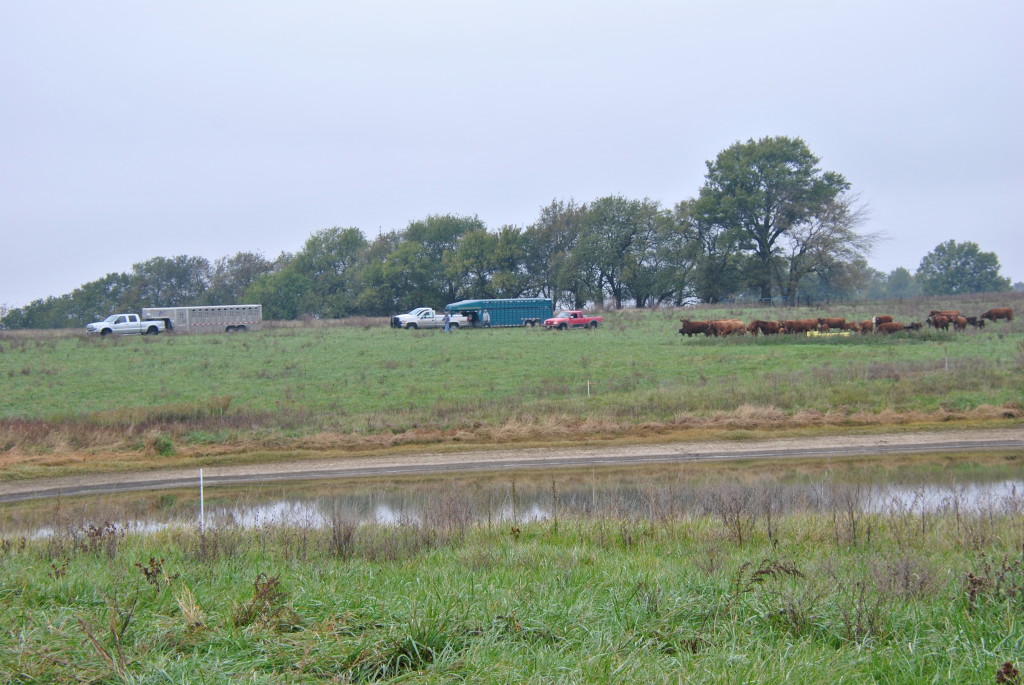
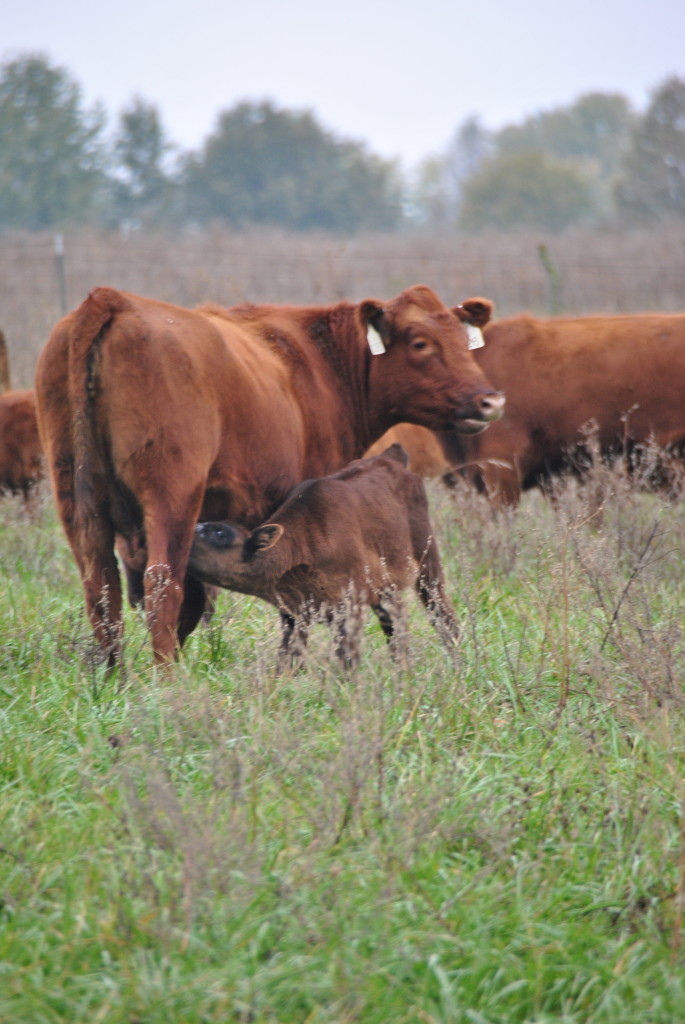
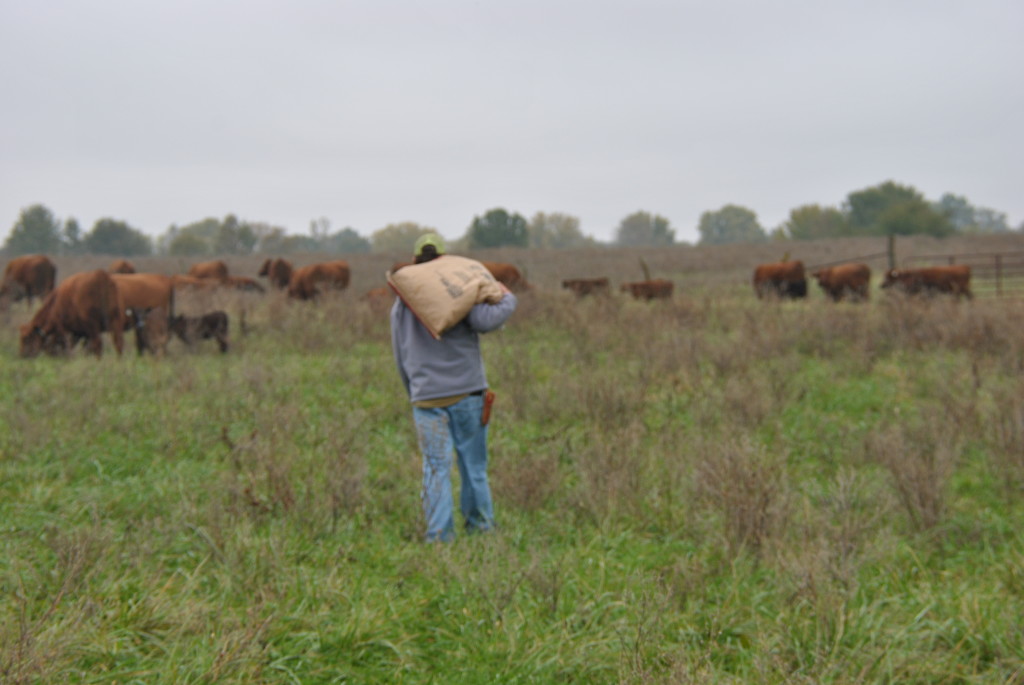
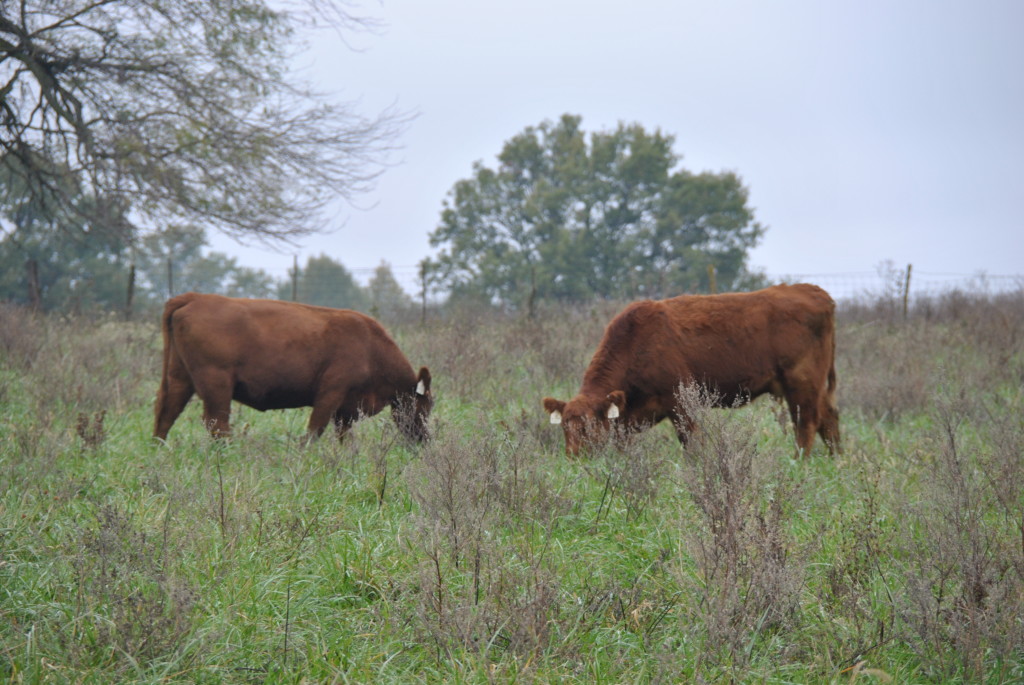
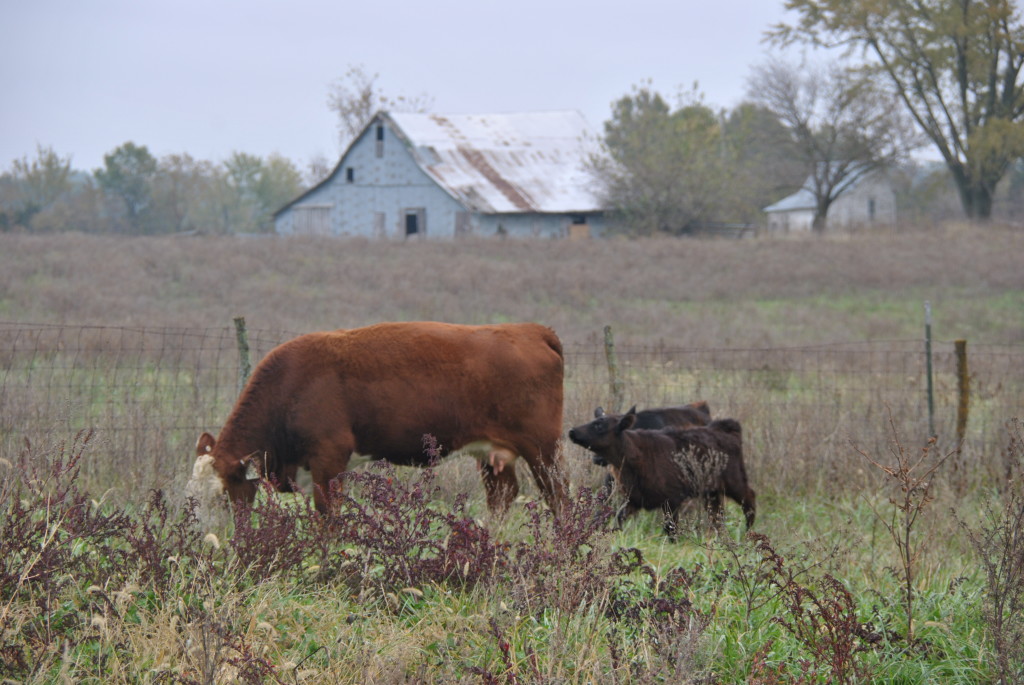
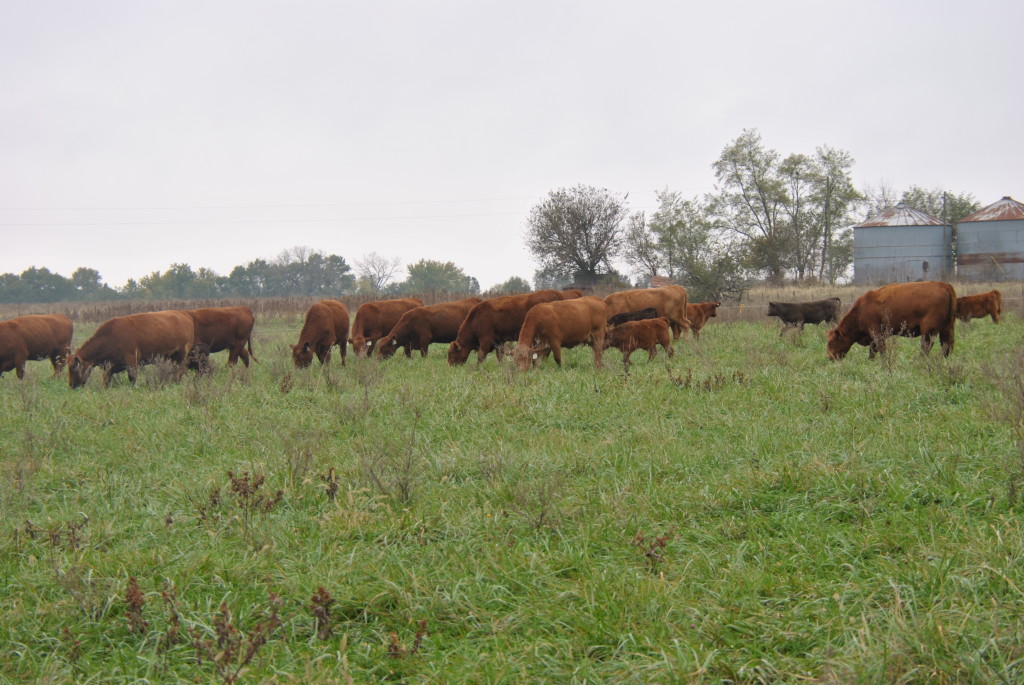
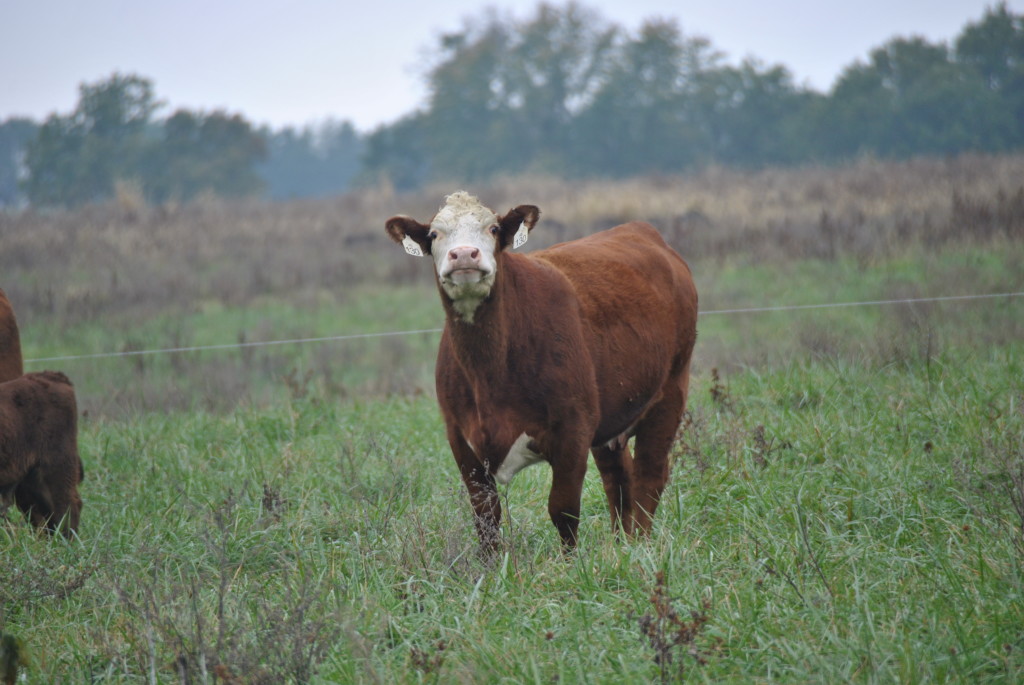
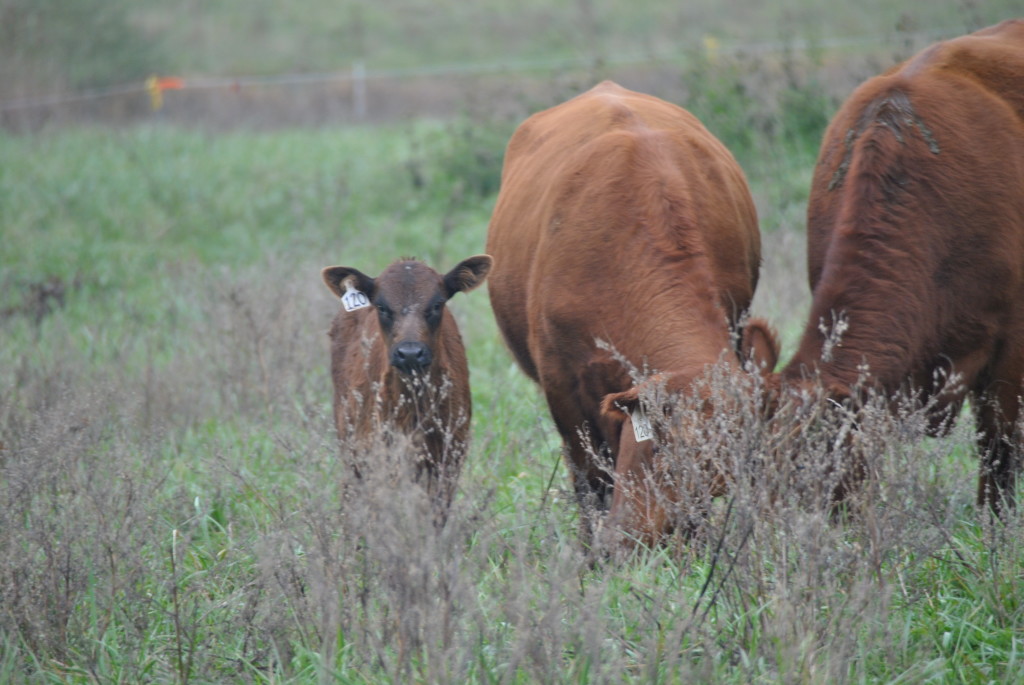
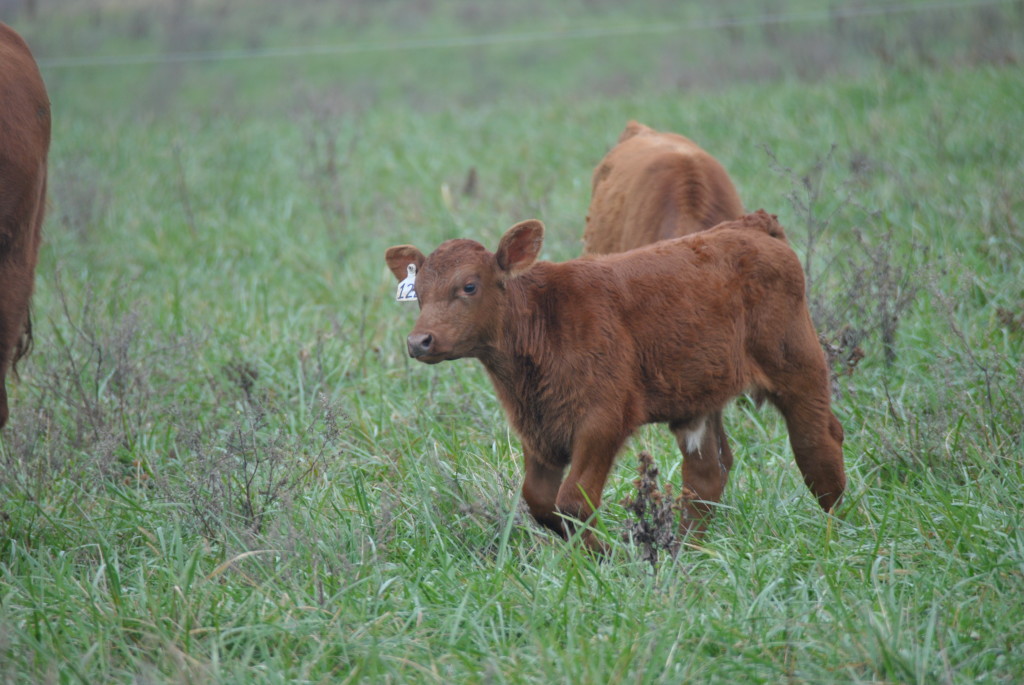
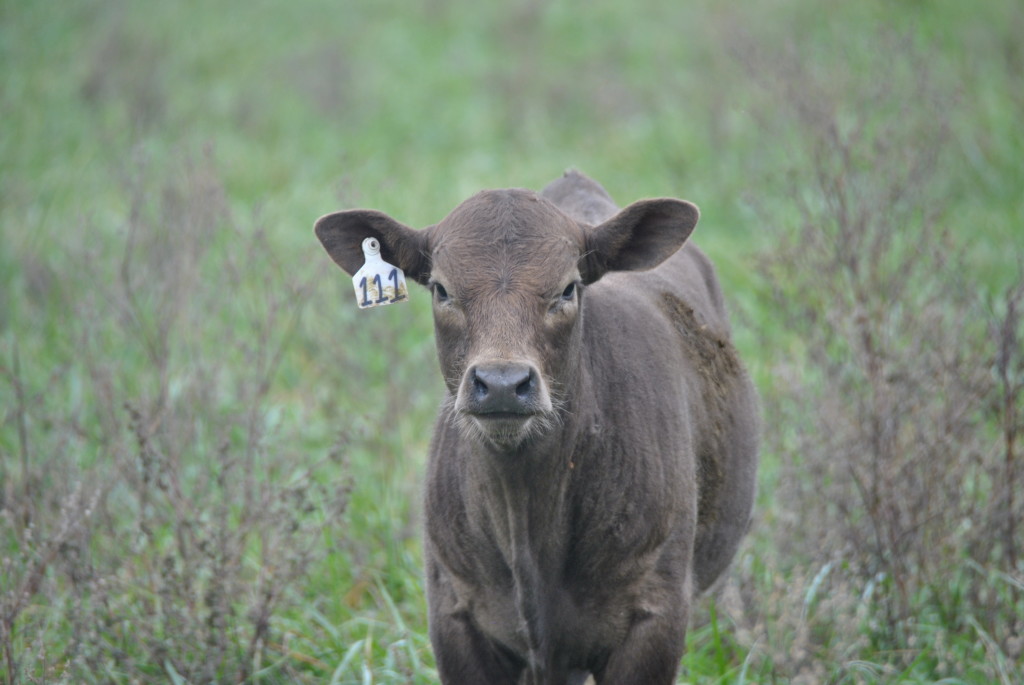
Beautiful!!! I’ll keep you posted on how they are doing and I’m sure you will see many more pics in the days to come on our Facebook page! Today was one for the books!
Love always,
Kara
GMOs and Chemical Usage vs Organic Crops
Our nephew, Jeremiah, is a well rounded “farm boy” who is passionate about agriculture and preserving the land. He cares deeply for his family and we are so proud of his accomplishments during his high school career which will quickly be coming to an end in May. Too quickly. Where did the time go? Recently, he asked a few of us to review an essay he had written for one of his classes. As soon as I finished reading it, I just knew it needed to be published on our blog. He clearly and efficiently tackles a very tough topic in today’s food industry – GMO vs Organic. I hope you find this information to be useful as you plan your grocery list and strive to feed your family the best food you can afford. Please note, we support all family farmers whether they raise their food organically or conventionally. We simply want to cancel out the “fake news” being spread about conventional farming methods.
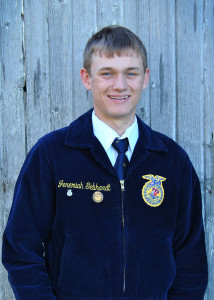
GMOs and Chemicals Versus Organic
This past Thanksgiving my family began a debate that seemed as if it would never end. The subject has always had an extreme importance to us. That debate just happened to center around if GMOs and the chemicals used during the plant’s life are truly bad for humans to consume.
GMOs are genetically modified organisms. They have been around for nearly thirty years and have impacted agriculture in many ways. Farmers have actually modified plants and crop production since 4000 BC, at least that’s the earliest recording of it from the Egyptians. In 1919 the word “biotechnology” was coined by Hungarian engineer Karl Ereky but it wasn’t until the 1973 were we able to successfully splice a gene from one organism and move it to another. In 1982 the first modern biotech plant was produced. Technology simply allowed for the original process to become more precise and more efficient. As a farmer, I believe that GMOs and chemicals are helpful and positively affect our lives and world today. They are able to help farmers produce higher yields in their crops which have helped with world hunger, lower ethanol and biodiesel prices, and help livestock farmers better feed their animals. On the other hand, others believe that genetically modified organisms and chemicals are unhealthy, add unnecessary toxins, and are harmful for our environment. The great debate is whether the positive influences of genetically modified organisms outweigh the potential health concerns and are the potential health concerns based on fact or fear.
The grand debate of farmers using GMOs has been going on for as long as they have been around. The opposing side’s claim of GMOs being unhealthy truly intrigues me. In his article “Ten Reasons to Avoid GMOs” Jeffrey Smith claims GMOs are unhealthy because of organ damage, gastrointestinal and immune system disorders, accelerated aging, and infertility. He also states that GMOs are unhealthy because the science community has seen a higher increase of chronic illnesses, food allergies, and disorders such as autism, reproductive disorders, and digestive problems. After making these accusations, Jeffrey Smith admits there is no research to prove that GMOs are the leading cause of this increase of disorders. His only link to the rise in health concerns is the timing of an increase in GMO usage. He does not have evidence to support his hypothesis. If he cannot prove what he is claiming then what validity is there to his statement? It could simply be that technology advanced rapidly at this time causing GMOs to be made possible while at the same time the medical field gained the ability to better test and diagnose chronic pain and disease. Genetically engineered food undergoes substantial research and testing before reaching the consumer. In 2012, the American Association for the Advancement of Science released an official statement regarding genetically modified foods, stating “the science is quite clear: crop improvement by the modern molecular techniques is safe.” In fact, some genetically modified food is even more nutritious than their non-GMO counterparts, according to Dr. Peggy Lamaux, a Cooperative Extensive Specialist at the University of California-Berkeley. She further explained, “An example is low linoleic acid canola oil that can reduce trans-fat content.”
Many people who are anti-GMO believe that genetically modified organisms add unnecessary toxins to maternal and fetal blood. There is a counter article to this concern titled “10 Studies Proving GMOs are Harmful? Not if Science Matters” by Layla Katiraee stating that they do not. Layla Katiraee points out that anti-GMO researchers reasons are incorrect, because their measurements were based on an experiment trying to find Bt’s Cry1Ab in plants not in humans. In order for the study to be correct, pregnant women would need to eat several kilos of corn in order for the Bt measurements to be found in the woman’s blood. There is also the thought that it would not be toxic to humans either way. For example, it is how chocolate is toxic to dogs but humans do not need to worry about the fear of chocolate being toxic. Even though they have found a small amount of toxicity in GMO plants, there is no evidence of the genetically modified organisms being more toxic to humans than organic food.

The environment also benefits by using GMOs. In 2014, a company named PG Economics finished a study that concluded with finding positive environmental and sustainability impacts from GM crops. In the study, they used previous and new data, and compared the difference genetically modified organisms have made on the environment and how GMOs were able to grow more crops on less farmland. During this study, they found that genetically modified crops were able to significantly reduce the amount of greenhouse emissions from agriculture practices by using less fuel and additional soil storage with the reduction of tillage practices. In 2012, carbon dioxide emission savings were equal to removing 11.88 million cars off of the road. Also with this study, they were able to prove that GMOs are able to grow more crops with less land. They found this very important because the amount of farmable land is declining significantly. They predict that in a 90 year time span we will have a third of the amount of acreage farmland per individual. This study proves a couple of the many positive effects of genetically modifies organisms that organic foods do not have.
Another area of concern for there being toxicity is in the chemicals that are applied to the crops such as Roundup. Many people who are anti-GMO and anti-chemical believe that crop farmers drown their crops, which would create extra toxicity in the crop. In an article covering this myth by corn and soybean farmer, Dave Walton, he puts how much chemicals farmers add to their fields into perspective. He states that corn farmers, on average, add half a gallon of herbicide spread out over one acre yearly which is roughly a football field. That would also equal to being one-third of a drop of chemicals per square foot. For soybean fields the amount of chemicals spread is even less. Farmers put on yearly an average of a pint and a half plus a couple tablespoons of herbicide per acre. This would equal one twelfth of a drop per square foot. The amount of chemicals added to a field is not near enough to add any concern of any toxins being added to the crops and especially the food that is presented at your table. Since chemicals added to GMO crops do not add near enough toxins to be more dangerous and more unhealthy than organic foods, genetically modified organisms do not lose the battle of having unnecessary toxins added.
The family discussion at Thanksgiving showed how the great debate over GMOs is often more based on emotion rather than on facts. A simple fix for human illness is ideal, and when a fix cannot be found a quick cause to blame is often sought. When emotion is removed and facts are focused upon, GMOs seem to be more positive than negative for our local community. GMOs give today’s farmer the potential to produce more grain on less land, with no scientifically proven health concerns, and the bonus of helping the environment at the same time. The facts show GMOs and chemicals are positive for farmers, consumers, and the environment.
By Jeremiah Gebhardt
References:
Smith, Jeffrey. “10 Reasons to Avoid GMOs – Institute for Responsible Technology.” Institute for Responsible Technology, 14 Mar. 2016, web.
Katiraee, Layla. “10 Studies Proving GMOs Are Harmful? Not If Science Matters | Genetic Literacy Project.” Genetic Literacy Project, 1 July 2016, web.
PG Economics. “Beyond the Rows.” New Study Shows Positive Impacts from GM Crops | Beyond the Rows, Monsanto Co, 15 May 2014, web.
Walton, Dave. “GMO Myth: Farmers.” Genetic Literacy Project, Genetic Literacy Project, 24 Mar. 2015, web.
Licklifer, Lauren. “GMO Foods – CommonGround.” CommonGround, findourcommonground.com/food-facts/gmo-foods/.
Yes, Daniel Tiger, beef is healthy!
My two year old is a huge fan of Daniel Tiger’s Neighborhood and I have to admit, I’m fond of the show myself. We often sing the opening song together…
“It’s Daniel Tiger’s Neighborhood, the land of make believe….won’t you ride along with me? Ride a-looong….won’t you ride along with me?!”
Of course, it is reminiscent of my days watching Mister Roger’s Neighborhood as a child. The writers have done a remarkable job blending the two shows and carrying on Mr. Roger’s values. I credit Daniel Tiger for getting us through the “potty training setback” with the creative song and instructions when Daniel and Prince Wednesday learned to use the potty. “If you have to go potty, STOP and go right away…flush and wash and be on your way!” It was also Daniel Tiger who taught us to “clean up, pick up, put away” with a another catchy tune we could all sing and our neighborhood tiger even explained why big storms don’t have to be scary as long as you are safe inside with a grownup. Our daughter eats these lessons up like they are the gospel truth. That’s why when Mrs. Tiger made veggie pizza and also veggie spaghetti my eye brows went up.
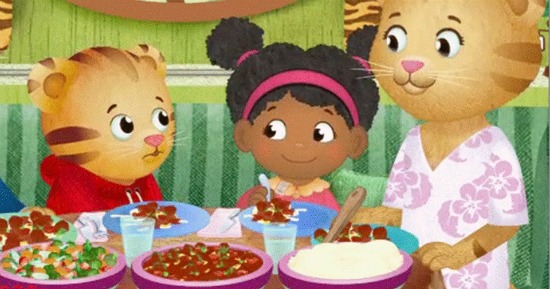
I’m all for teaching our children to eat healthy, take care of their bodies and to help them receive good nourishment. Which is why it bothers me that they leave beef out of the picture.
Angela Santomero is the Creator, Executive Producer and Head Writer of this new favorite show of ours and I recently read her reasoning behind this “healthy” eating focus. Here is what she said,
Since the Tiger Family was dining at a restaurant, I got to choose what my four year old little Daniel Tiger would order to eat. So, what did Daniel order? Pizza? Burger? Chicken fingers?
Daniel ordered grilled chicken and broccoli.
Then I got THE notes.“This is not what real kids eat. We should show him eating like a normal four year old.”
First of all, Daniel is a tiger.
Second of all, I have millions of children and parents every day learning and (hopefully) modeling what our characters do. We carefully test our episodes to maximize learning of our life lessons curriculum. If making a good food choice is not a major life lesson, then I don’t know what is.
(Excerpt from Modeling Healthy Eating Habits by Angela Santomero)
Both of her arguments completely fall apart at the seams and here’s why. First of all, she is correct Daniel IS a tiger. No, she cannot have the tiger tearing into a zebra on children’s animated television. However, she also can’t say that is it the reason he is isn’t eating like a “normal” 4 year old when she is trying to get all “normal” 4 year old children to eat like Daniel Tiger. Her argument is a never ending circle. If she wants to argue that he is a tiger and not human then why does it matter what he orders to eat? Oh, that’s right, because he is modeling what a human child SHOULD eat. Then wait, he isn’t just a tiger is he? No, he’s a role model for young minds.
Which leads to her next argument. I agree with the premise on this one. Making a good food choice is a valuable life lesson. Which is why we should be HONEST with children and teach them all of the health benefits available to them through their food. Did you know that if Angela would have added beef to her vegetable rich spaghetti, little Daniel Tiger and Miss Elaina would have received much needed protein and iron to strengthen their muscles and blood flow, vitamins B6 and B12 to help their growing brain functions, Zinc for their immune systems, Phosphorus which helps build strong and healthy teeth, Selenium which helps protect cells from damage and Riboflavin to give them the fuel and energy their active bodies need? And that’s just SOME of the health benefits of beef. There are several more! I understand her wanting to introduce kids to new foods and focus on food groups they might not want to eat very often, but why leave beef out altogether?
Some parents may ask, “But what about the fat content?”
All lean beef cuts have less than 10 grams of total fat, 4.5 grams or less of saturated fat and less than 95 milligrams of cholesterol per 3.5 oz cooked serving. Some cuts of beef are as lean as a 3 oz skinless chicken thigh! When I brown our hamburger (raised on our farm) I rarely have to drain off any extra juice or grease. We have corn-fed beef and it is still lean and heart healthy!
“But what if my child only eats beef if it’s covered in gravy or cheese?”
So I’m assuming based on that argument that we are only feeding kids chicken that hasn’t been fried or covered in gravy or cheese? 🙂 What if they ate the cheeseburger or roast beef with gravy and cut down on the potato chips and only had one cookie after dinner? How about we teach our kiddos that vegetables, ALL meats, cheeses and carbs are HEALTHY! Even dessert is a fun treat! Maybe the life-lesson on children’s television and also around the dinner table should be that it’s all about self-control, listening to our bodies and not over eating anything, including vegetables. I would love to see Angela use her creativity to mesh the food groups together and represent ALL farms and the gifts they bring to the table. Maybe they could even visit their local farmer’s market and come home with conventional corn-fed beef, all-natural chicken, organic veggies, fresh eggs and buttery homemade bread along with a scoop of homemade ice cream and share the importance of the nutrients and safe ingredients found in each food group. Maybe, just once, a television show could praise ALL of America’s bountiful harvests and brag on the safety and health of our food! Now that would be a “major life lesson” worth watching!
Ready to introduce beef at the table? Here’s an easy, kid-approved recipe thanks to my dear friend and mother of 4, Cindi Glenn! I think Daniel Tiger would LOVE it! 🙂
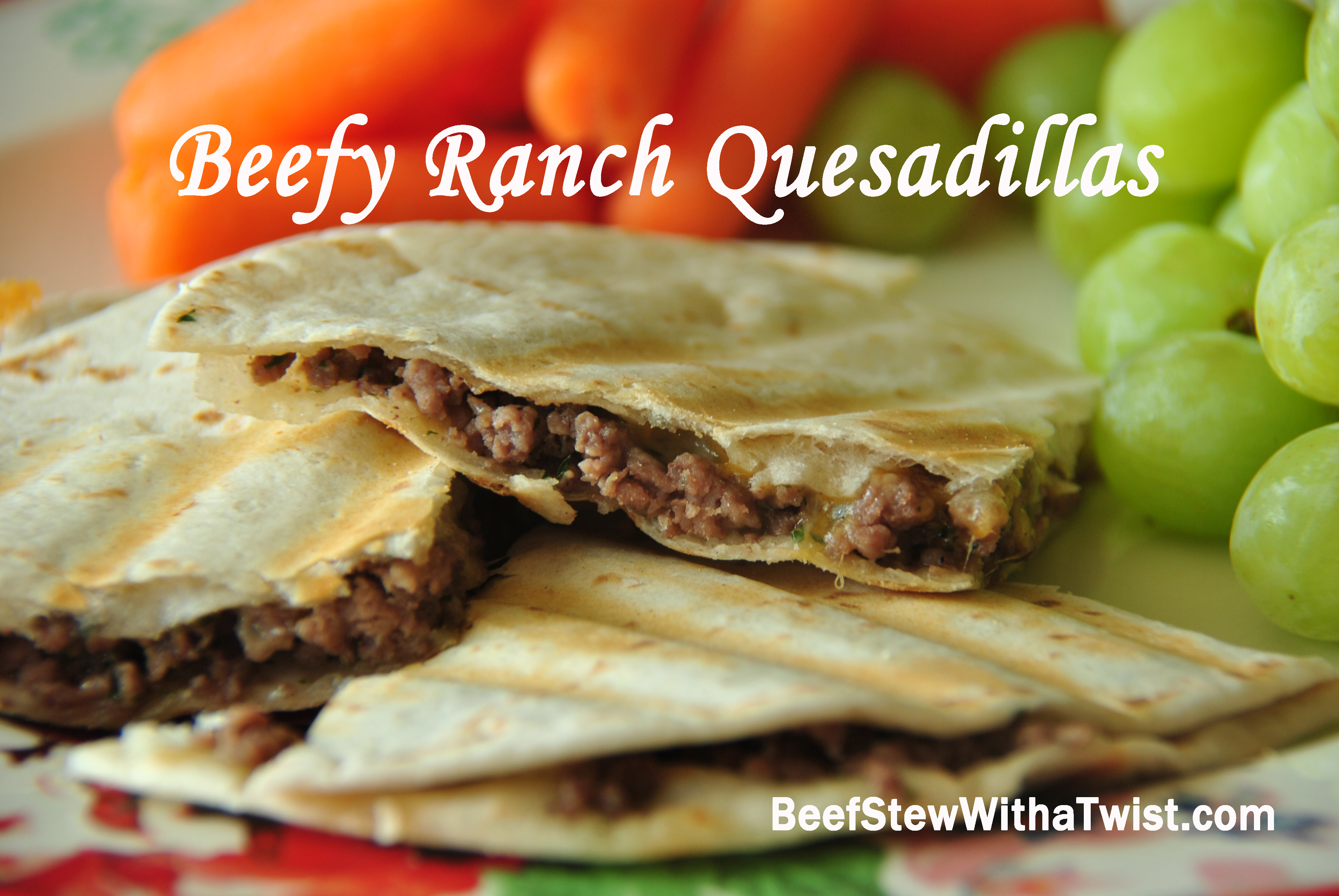
Ingredients:
- 1 lb browned hamburger
- 1 packet Ranch Dip seasoning
- 1/2 cup of shredded cheese
- 6 tortillas
Directions:
- Brown your hamburger and stir in the packet of ranch seasoning until it is well mixed.
- On a George Foreman grill or your handy, lightly sprayed skillet, lay out one tortilla and cover it with a nice layer of browned, Ranch flavored beef.
- Sprinkle with shredded cheese and cover with another tortilla.
- Cook until cheese is melted and quesadilla is heated through.
- Repeat process 2 more times or until you run out of ingredients!
- Serve with sour cream or salsa and enjoy!!!
Post written by Kara Edwards of Beef Stew with a Twist
Michelle Obama’s “Red Meat Secret”

During Growth Energy’s Executive Leadership Conference held in Orlando following the Daytona 500, Randy and I were attending the reception and watching the live auction when he noticed we were standing a few feet behind the table where Iowa’s Governor Terry Branstad and his wife and son were seated. Randy went on to enlighten me on the fact that Gov. Branstad is the longest nonconsecutive serving governor in the nation and that he has been a tireless supporter of ethanol. (Just ask Sen. Cruz about that.) I nodded like wives do and continued watching the stage where The Bachelor star Chris Soules, American Ethanol driver Austin Dillon and Minnesota Vikings linebacker Chad Greenway were helping the sponsors by “Amping” up the auction. As the three hunks were hamming it up on stage, the Governor stood up and looked around, walked over to where we were standing, introduced himself and began visiting with us. His sincere and friendly demeanor made me realize why Iowans elected him to the Iowa House of Representatives in 1972, 1974, and 1976, then as Iowa’s lieutenant governor in 1973. He was Iowa’s longest-serving governor, from 1983 to 1999, weathering some of Iowa’s worst economic turmoil, during the farm crisis of the ’80’s, while helping lead the state’s resurgence to a booming economy in the 90’s. Following his four terms as governor, he went on to serve as president of Des Moines University for a six-year tenure. Seeing a need for change in the way state government operates and wanting to “lead Iowa’s comeback”, Branstad retired from DMU, began campaigning and was re-elected governor in November of 2010 and again in 2014.

There we were attending an outdoor barbecue at Whispering Creek Farm on the property of the J.W. Marriott Hotel and visiting with the nation’s longest serving governor. Party lights were strung across the rustic tables and candles flickered in lanterns hanging from trees with the mouth-watering aromas of beef brisket, chicken and pork and roasted on open flame grills and tempting deserts of cobblers and puddings beckoned. There was even a campfire for the fanciest s’mores I’ve ever seen.
I asked the governor if he had enjoyed his dinner. He smiled and said, “I had dinner in the White House last night. It was a banquet for the nation’s governors. I was fortunate enough to be seated at the First Lady’s table.”
I was visiting with someone who had eaten a meal with Michelle Obama, the woman who has changed school lunches and had a very different definition of “healthy” foods than most dietitians I have heard comment.
I gasped!
“What was it like?” I asked.
The kind governor must have thought I meant the ambiance or the decor because he answered, “The centerpieces were huge” and I don’t remember what else he said. As soon as I could I tried again I asked,
“What was on the menu?”
“We had seafood as an appetizer.”
I nodded. Yes, I would expect that from the woman whose priority was taking red meat out of the 2015 Dietary Guidelines. The guidelines that would be used in every hospital, school and government office that receives federal revenue.
I held my breath and my tongue.
The Governor continued.
“And we had beef for the main course.”
With great self-control, I made sure I had heard him correctly. “Mrs. Obama served beef at the banquet?”
The kind and patient Governor nodded and added. “There was dessert, too, but I didn’t eat that. I have to be careful about my sugar intake since my parents had diabetes. He went on, not once disparaging the First Lady’s diet, merely stating the truth of the matter. “It is not harmful to eat small portions of red meat.”
Thank you, Governor Branstad! And thank you, Mrs. Obama for serving red meat in the White House. As a former hospital administrator, the First Lady surely recognizes the dietary value of red meat after all!




